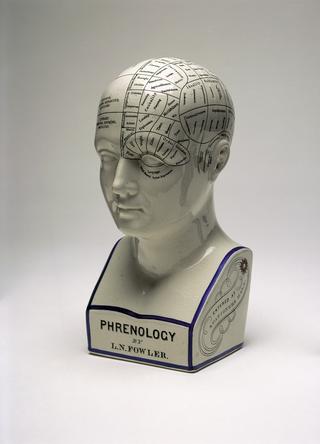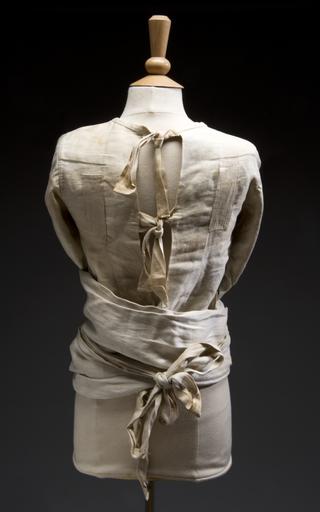
Phrenological head of unidentified male






Plaster phrenological head of unidentified male, 19th century.
Francis Gall (1758-1828) founded phrenology. This theory argued reading bumps and lumps of the skull, and therefore the brain, gave clues about a person’s personality and character. This plaster cast of an unknown man was made in July 1827 and signed ‘O’Neil’. Further writing is illegible. O’Neil was a maker based in Edinburgh who had published a catalogue in 1823 of phrenological heads for sale. This was just three years after the Phrenological Society was founded in Edinburgh in 1820. Phrenological heads were often cast from society figures, criminals and indigenous peoples. People carrying out consultations used them as reference guides. The cast may have been presented as evidence of the supposed ‘superiority’ of the European race.
Phrenology became popular in the 1800s. However, it became controversial within medical circles. It was eventually dismissed by the medical profession as quackery. Phrenology was still studied in the UK until the British Phrenological Society closed in 1967.
Details
- Category:
- Psychology, Psychiatry & Anthropometry
- Object Number:
- 1992-34/26
- Materials:
- plaster
- Measurements:
-
overall: 270 mm x 150 mm 1.11kg
- type:
- phrenological head
- credit:
- Philip Mutton ARICS




